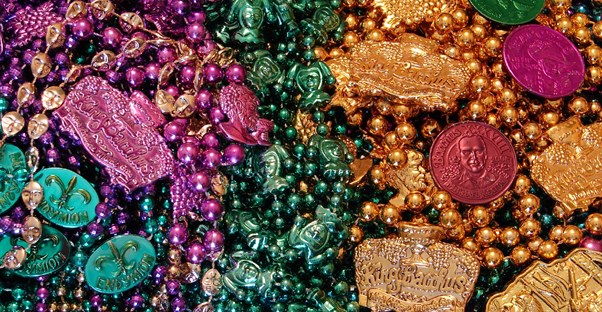Sweet Home Alabama

American Mardi Gras celebrations trace their beginnings to Mobile, Alabama, (not New Orleans) when French settlers held celebrations as early as 1703. The image above, from the 1930s, is one of the earlies pictures of a New Orleans parade.
(photo via Infrogmation, CC)
Mardi Gras Means Money

An economic impact study released by the University of New Orleans estimates that Mardi Gras generates over $840 million annually.
(photo via The Library of Congress)
Banned from Bourbon

Bourbon Street may be the most famous street in NOLA, but the major parades have been banned from the tight confines of the French Quarter since 1972.
(photo via MsSaraKelly, CC)
Mandatory Masks

Mardi Gras masks aren’t just for fun. It’s illegal to ride on a Mardi Gras float in New Orleans without one.
(photo via Caitlin Regan, CC)
Heads Up!

The Super Krewes will toss more than 1.5 million cups, 2.5 million doubloons, and 2.8 million beads. You might want to practice your hand-eye coordination before attending.
(photo via Mark Gstohl, CC)
The Big Easy's Big Cleanup

The city of New Orleans estimates that they will clean up 25 million pounds of beads, cups, and trinkets after all of the parades.
(photo via Tara Schmidt, CC)
The Season of Cakes
 Author
Sherrill Dean
Last Updated: April 04, 2024
Author
Sherrill Dean
Last Updated: April 04, 2024


